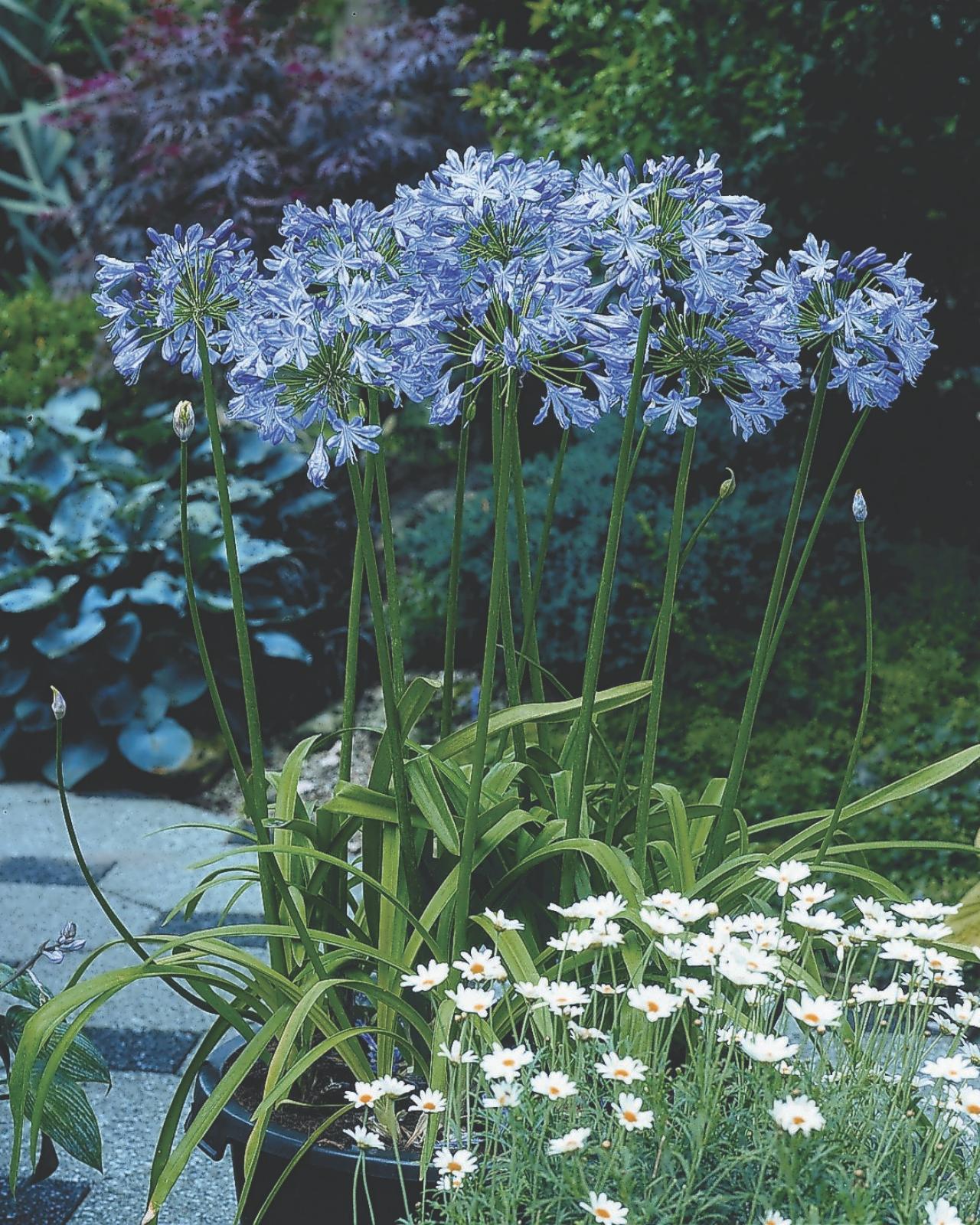Releasing the Secret to Successful Agapanthus Growing: Advice for a Flourishing Yard
In the world of horticulture, growing agapanthus efficiently requires a critical approach that incorporates various facets of plant care. By comprehending the nuances of agapanthus growing, one can produce an environment where these plants flourish and bloom generously.
Growing Agapanthus: Ideal Practices
When planting Agapanthus, appropriate dirt preparation is necessary for making certain successful development and development of these beautiful blossoms. Agapanthus, generally called Lily of the Nile or African lily, grows in well-draining soil with a somewhat acidic to neutral pH level - Agapanthus. Before planting, it is important to amend heavy clay dirts with natural matter such as garden compost or peat moss to improve drain and provide crucial nutrients for the plants
To grow Agapanthus, select a location that gets full sunshine to partial color, as this will certainly promote healthy growth and plentiful blooming. Dig a hole twice the diameter of the plant's origin round and position the Agapanthus at the very same depth it was formerly growing. Gently backfill the opening with soil, weighing down firmly to get rid of any type of air pockets around the origins.
Water the newly planted Agapanthus thoroughly and remain to keep the dirt evenly moist, especially during the plant's active expanding season. Agapanthus. Applying a well balanced plant food once a month can additionally support the plant's growth and flowering. By complying with these finest methods for planting Agapanthus, you can develop a stunning display of these exciting flowers in your yard
Perfect Dirt Issues for Agapanthus
For optimum development and flowering success of Agapanthus plants, making sure the dirt problems are optimal is crucial. Agapanthus grows in well-draining soil with a slightly acidic to neutral pH level varying from 6.0 to 7.0. This kind of soil permits sufficient water drain, preventing waterlogging which can lead to root rot. To boost dirt water drainage, consider including raw material such as garden compost or peat moss when preparing the growing website. Furthermore, Agapanthus chooses soil that is rich in nutrients, so incorporating a well balanced fertilizer during the expanding season can promote healthy and balanced growth and dynamic flowers.

Watering and Fertilizing Tips
To ensure healthy and balanced growth and vivid blooms, correct watering and fertilizing techniques are important for successful Agapanthus farming. Agapanthus plants benefit from regular watering, particularly during the expanding period.
When it comes to fertilizing Agapanthus, a balanced plant food with equivalent parts nitrogen, phosphorus, and potassium can be applied in the springtime to advertise healthy and balanced growth and blooming. Slow-release plant foods are perfect for giving nutrients gradually over an extended duration. Avoid read this article over-fertilizing, as this can lead to extreme vegetation development at the expense of flowers.
Furthermore, including raw material like compost right into the dirt can improve nutrient degrees and enhance dirt structure, helping in the overall health of the Agapanthus plants. By adhering to these watering and fertilizing pointers, garden enthusiasts can ensure their Agapanthus plants prosper and create sensational displays of blossoms.
Trimming and Deadheading Methods
Appropriate pruning and deadheading strategies play an essential role in maintaining the health and wellness and visual appeals of Agapanthus plants, complementing the essential methods of watering and fertilizing for successful cultivation. Trimming Agapanthus involves getting rid of invested blossom heads, yellowing or dead leaves, and general shaping of the plant to advertise better development. Deadheading, the process of removing discolored blossoms, not just boosts the plant's appearance yet also urges additional flowering.
When deadheading Agapanthus, it is a good idea to clip off the blossom stem at More hints the base making use of sharp, tidy shears. This process redirects the plant's energy from seed production back right into origin and foliage growth, promoting a much healthier and more durable plant. Regular deadheading can expand the growing period of Agapanthus and protect against self-seeding, which can bring about congestion.
In terms of trimming, Agapanthus generally gain from a light trim after blooming to clean up the plant and encourage fresh growth. Reducing the spent blossom stems and removing any type of dead or damaged vegetation assists preserve the plant's vigor and overall look. Nonetheless, it is important to stay clear of cutting into the crown of the plant, as this can damage its health and wellness.

Protecting Agapanthus From Vermins and Diseases
Applying efficient pest and illness administration techniques is important to protecting the health and vitality of Agapanthus plants in growing. Agapanthus are usually durable plants, yet they can still succumb different bugs and conditions if not appropriately taken care of. One typical pest that influences Agapanthus is the Agapanthus borer, a caterpillar that tunnels right into the plant, causing damages to the fallen leaves and flowers. To prevent infestations, routine examination of the plants is crucial. If borers are identified, they can be by hand removed, or insecticidal soap can be utilized as a control step.
Along with pests, Agapanthus are susceptible to illness such as root rot and fungal leaf places. These issues can often be stopped by making sure appropriate drainage and avoiding overwatering. Influenced parts of the plant must be without delay gotten rid of to protect against more spread if signs of condition show up. Fungicides may additionally be made use of as a therapy step, complying with the supplier's instructions thoroughly. By staying watchful and addressing insect and condition concerns without delay, garden enthusiasts can aid their Agapanthus thrive and grow.

Final Thought
In conclusion, successful growing of agapanthus requires correct planting techniques, perfect soil conditions, sufficient watering and fertilizing, routine pruning and deadheading, and protection from insects and conditions. By complying with these techniques and suggestions, garden enthusiasts can make sure a flourishing yard filled with stunning agapanthus blossoms. Agapanthus. Remember to maintain constant care and interest to information to advertise the health and wellness and longevity of these spectacular plants
When growing Agapanthus, proper soil preparation is essential for ensuring effective growth and growth of these gorgeous flowers.Water the freshly planted Agapanthus thoroughly and proceed to maintain the soil equally damp, especially during the plant's energetic expanding season.For optimum growth and blooming success of Agapanthus plants, making sure the soil problems are suitable is critical. When growing or hair transplanting Agapanthus, ensure the soil is well-prepared to give the required structure for the plants to establish themselves efficiently. One usual insect that affects Agapanthus Get the facts is the Agapanthus borer, a caterpillar that tunnels right into the plant, triggering damage to the flowers and leaves.